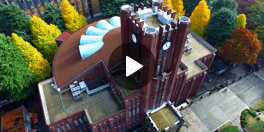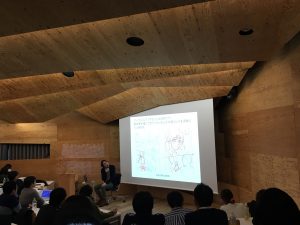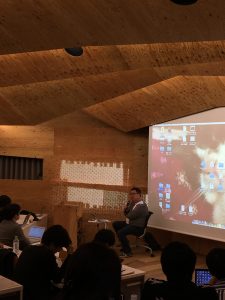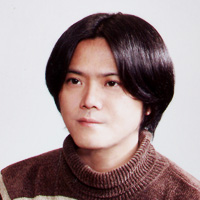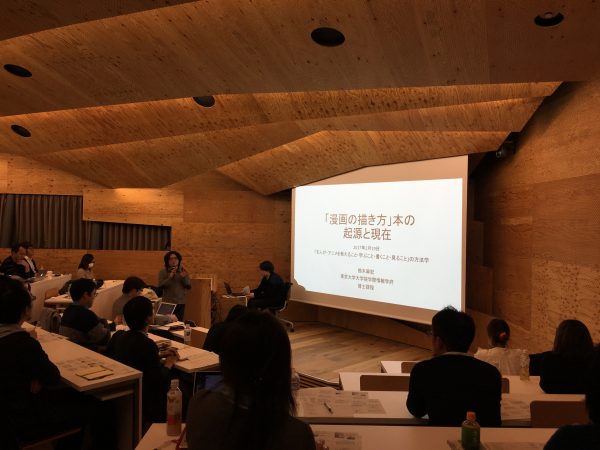
February 21, 2017
「まんが・アニメを教えること・学ぶこと・書くこと・見ること」の方法学Methodology of Teaching/Learning/Drawing/Reading Manga and Animation
2017年2月19日、東京大学大学院情報学環角川文化振興財団寄付講座/国際日本文化研究センター共催シンポジウム「まんが・アニメを教えること・学ぶこと・書くこと・見ること」の方法学(メソドロジー)が開催されました。大塚英志(国際日本文化研究センター)、浅野龍哉(北京外国語大学)、山本忠宏(神戸芸術工科大学)、情報学環からは北田暁大教授、博士課程の團康晃、鈴木麻記が登壇し、様々な経験と視点から、「まんが・アニメ」にまつわる教育方法について、議論を重ねました。
第Ⅰ部「「描く方法を教える方法」をめぐって」では、大塚氏が「『人を殺さないため』の物語のリテラシー」と題した発表をしました。1988-89年の連続幼女誘拐殺人・宮崎事件について、犯罪者が物語のリテラシーを持っていなかったことを出発点に、物語のリテラシーや物語の構造を教えるカリキュラムや教材制作について、および国内外でのワークショップ経験を共有しました。続いて、北京でマンガの講義を行う浅野氏は、中国、フランス、シンガポールでのマンガ講義の形態について報告されました。中国の発展の早さと学生の質の高さを評価し、日本のマンガの特徴のひとつとも言える「見開き」やコマの配置に関して、まだ広く認識されていないという見解も述べられました。山本氏はマンガを教える際、映画制作の導入によって、新しい気付きを得るという実践も紹介しました。
第Ⅱ部「教え/学ぶ方法を社会学する」では、 大学院生の二人(團康晃と鈴木麻記)が、エスノ・メソドロジーというアプローチによる会話分析と歴史社会学の観点から、それぞれマンガの教え・学ぶ方法を対象とした研究を共有しました。團はフランスにある漫画・アニメーションインターナショナルスクールEIMAで行われたワークショップにおいて、様々なメディアや通訳を通して、講師である中島千晴と現地の生徒の間の相互行為を分析した研究結果を発表しました。鈴木は江戸・明治・大正期に遡り、「漫画の描き方」本の起源について掘り下げました。
一連の発表を通して、このシンポジウムは「まんが・アニメの教え/学ぶ方法」が軸でありながら、多様なアプローチが示されました。
記事:潘夢斐(博士課程)
On February 19, 2017, Kadokawa Culture Promotion Foundation and Interfaculty Initiative in Information Studies, The University of Tokyo Media-Content Research Project and The International Research Centre for Japanese Studies co-organized a symposium, titled as “Methodology of Teaching/Learning/Drawing/Reading Manga and Animation”. Eiji Otsuka (The International Research Centre for Japanese Studies), Tatsuya Asano (Beijing Foreign Studies University), Tadahiro Yamamoto (Kobe Design University), and Prof. Akihiro Kida and doctoral students, Yasuaki Dan, Maki Suzuki, discussed over the pedagogy methods of manga and animation from varying angles.
In the first part, “Teaching how to draw”, Otsuka delivered a presentation titled as “Narrative literacy in order not to kill people”. Starting from the Miyazaki Case (serial murder of little girls between 1988 and 1989), Otsuka pointed out that tragedy was caused by the criminal’s lack of “narrative literacy”. During the presentation, Otsuka shared his experience of manga-production curriculum textbooks and workshops both in Japan and overseas to cultivate “narrative literacy”, or structure of narrative. Following Otsuka, Asano talked about the manga lectures in China, France, and Singapore. Asano commented over the rapid development and high quality of students in China. He also indicated that “two-page spread (mihiraki)” or one of the characteristics of Japanese manga, and layout of panel (koma), was not yet widely known. Yamamoto introduced his practice of introduction of movie making to teach manga and how that led to new findings.
In the second part, “Turning teaching/learning methodology to sociology”, two graduate students, Dan and Suzuki, shared their research over manga teaching/learning via the approach of conversation analysis of ethno-methodology and historical sociology respectively. Dan focused on a workshop held at EIMA, International Media School in France and analyzed the interactive behavior between the lecturer, Chiharu Nakashima and the local students with the mediation of various media and translation. Suzuki traced back to Edo, Meiji and Taisho period to unveil the origin of books that teach how to draw manga.
Through a series of presentation, this symposium reveals the diversity of approaches to study the “methods of teaching/learning manga and animation”.
The article was written by Pan Mengfei (PhD student)
主担当教員Associated Faculty Members
教授
北田 暁大
- 社会情報学コース
- アジア情報社会コース
Professor
KITADA, Akihiro
- Socio-information and communication studies course
- ITASIA program

